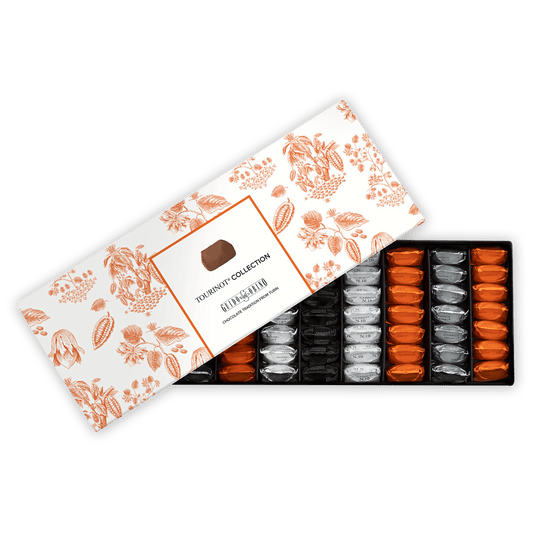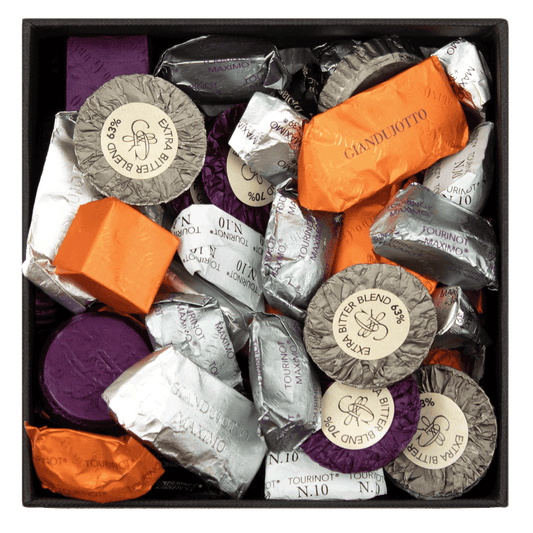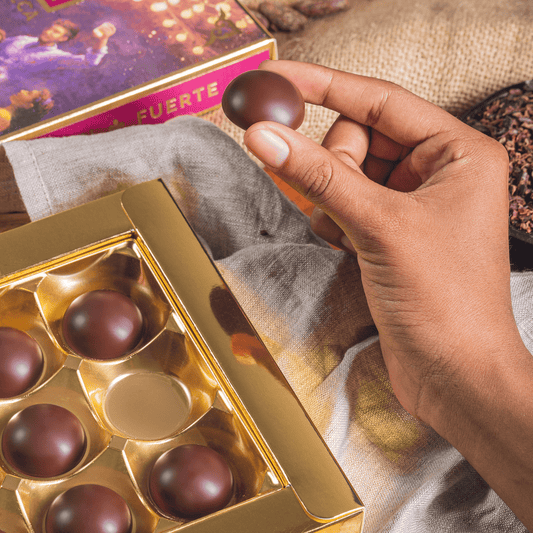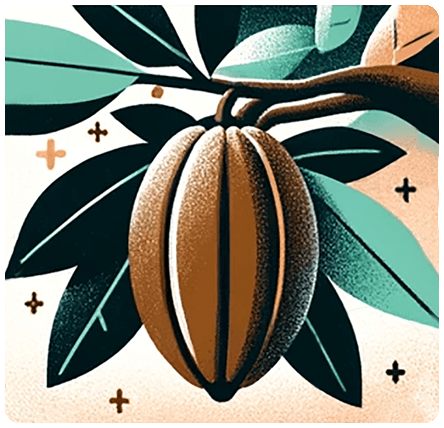Everyone has their own idea of what chocolate is; be it creamy, sweet, decadent, or all three. What they may not know is chocolate comes from the seeds of a tropical fruit tree called Theobroma cacao. The weeks-long process of turning that colorful fruit into a delicious bar of chocolate is complex, and these days it’s happening all around the world.
Delicious chocolate is being made everywhere, from South Africa and the South of France, to Taiwan and rural Costa Rica. The process of chocolate making from the tree to a chocolate bar can be broken down into seven basic steps: harvest, fermentation, drying, roasting, winnowing, refining, and tempering. Except for in very rare cases, each one of these steps has been done— to some extent— for every chocolate bar you’ve ever had.
Because chocolate relies on a crop from faraway countries and on expensive equipment you cannot pick at a kitchen supply store, it remains a mysterious food for most. However, knowing where your food is coming from from is important, as it will provide a deeper appreciation of it. So in this post, you’ll learn how chocolate is born and how it’s made. Spoiler: it takes a lot of work to make your favorite food.
![]()
How Chocolate is Born: Graphic by
Ecole Chocolat and Megan Giller of
Chocolate Noise
Harvesting Cacao Fruits
The cacao tree’s football-shaped fruits grow all over the trunk and branches of the tree. There are different types and colors of cacao, but each fruit pod will signal that it’s ripe with a brilliant color change. Farmers pick these ripe pods by cutting them off at the base using a sharp knife, often a machete, so as to not damage the tree. Pods vary hugely in size when they’re ripe, from as small as your palm to bigger than your head!
Cacao Fermentation
Once all the ripe pods in one area of a farm have been harvested, they’re taken to a central area for fermentation. Opening the fruits yields a few dozen almond-shaped seeds per pod, settled in an aromatic white pulp which smells similar to floral lychee. The seeds are scooped out from the pods and put in a pile. These cacao seeds— more often called cacao beans— are transferred into boxes and covered, traditionally by banana leaves, to stop heat from escaping. Maintaining high temperatures throughout fermentation is vital to develop chocolaty flavors and stop the seed from sprouting.
Because cacao begins sprouting as soon as the pods are removed from the trees, moving the beans to boxes needs to happen quickly. They’ll then stay in those boxes for 3-7 days, in which time the yeast and bacteria from the air will eat the fruit’s natural sugars, completely transforming the flavor of the beans. Many larger cacao processors ferment beans in tiered boxes, aerating them as they transfer between boxes, giving the sugar-eating bacteria sufficient oxygen to fully ferment all the cacao. During this process, which is also necessary in wine and beer production, acids are formed and bitter compounds are transformed within the beans. This makes fermentation one of the most vital steps in chocolate making.
Drying Cacao Beans
Following fermentation, the beans must be dried to a low moisture level; around 7% is ideal. Farmers often dry the beans in direct sunlight as much as possible, usually for 5-7 days, but some areas with very high humidity use fire to finish fully drying the beans. Once the cacao is fully dried, it can be packed into bags and prepared to be sent to chocolate makers. Shipping is almost always done by boat and can take a couple of months, so it’s extremely important that the beans are dry enough that mold can’t grow.
Roasting Cacao Beans
Once a chocolate maker receives their cacao, it must be inspected and cleaned of debris. This can be anything from twigs and pieces of cacao pods to trash and bits of metal. Cleaned cacao is then roasted, usually in a specialized roaster, but sometimes in an oven or a pan over fire. Roasting takes less than an hour, but how long & at what temperature the beans are roasted affects the final flavor of the chocolate, similar to fermentation. Like coffee beans, cacao beans can have a light, medium, or dark roast, and each roast is less nuanced than the last. Roasting also loosens the beans’ natural shells, making the next step much easier. Some makers like Raaka do make chocolate from unroasted (please don’t say raw!) beans but the shelf life of these bars will be shorter.
![]()
Cracking & Winnowing Cacao Beans
Similar to peanuts or Brazil nuts, cacao beans must be cracked and have their shells removed. The shell is hard and has little to no chocolaty flavor, and could still have bacteria from the farm on it. The shells are very thin, so once the beans are cracked they can be put into a winnowing machine. The winnower blows air under the beans such that the lighter shell is blown off to the side. The shells are referred to as “husks” at this stage, and the broken pieces of the beans are called “nibs.”
Refining & Conching Chocolate
The process of turning cacao nibs into chocolate is often divided into two parts: refining and conching. First, the nibs must be reheated and ground down into a paste, which can take as little as a couple of minutes. Cacao is naturally about half fat (cocoa butter) and half solids (cocoa solids), so reheating the beans before grinding reheats the fat and speeds up the process. The ground cacao is known as cacao mass, and is quite bitter and acidic.
The cacao mass is next put into a refiner for 24 to 72 hours. During refining, the cocoa solids are mashed into a smaller particle size, with larger machines giving more control over how small those particles get. This creates the smooth, uniform texture we associate with melted chocolate. Conching is a separate step, often blended into refining, during which air is introduced into the chocolate, removing moisture and some of the excess acids formed during fermentation.
Sugar and any other ingredients are added during refining; the most basic form of chocolate is cacao + sugar.
Tempering Chocolate
After chocolate is refined, it can be eaten straight out of the machine! But most chocolate is tempered before being packaged for sale. Tempering is the process of heating, cooling, and then slightly re-heating chocolate, so that it stays smooth and shiny. The tempering process compels cocoa butter’s fatty acids into form V, which give chocolate a shiny surface, a strong snap, and a smoother texture in your mouth. Unless it’s being used in baking or been diluted with a cheaper oil that more easily coats the cocoa and sugar solids, chocolate must be tempered.
If left untempered, a mixture of the six cocoa butter crystal formations will remain, causing grey streaks or bubbles of fat throughout the chocolate, called fat bloom. Once chocolate is made, many makers let it mellow out for a few months before tempering, allowing the flavor to fully develop before tempering and using it. Once chocolate is tempered it can be molded into a chocolate bar, used to make bonbons or coat a candy bar, or even sculpted into any number of beautiful creations.
By now, you have probably gained an appreciation for the labor-intensive process that is chocolate-making. Of course, not all craft chocolate-makers are equally skilled at coaxing flavor of the beans. At Bar & Cocoa we work hard (translation: we taste a lot of bars) so you can order freely, and enjoy your chocolate.
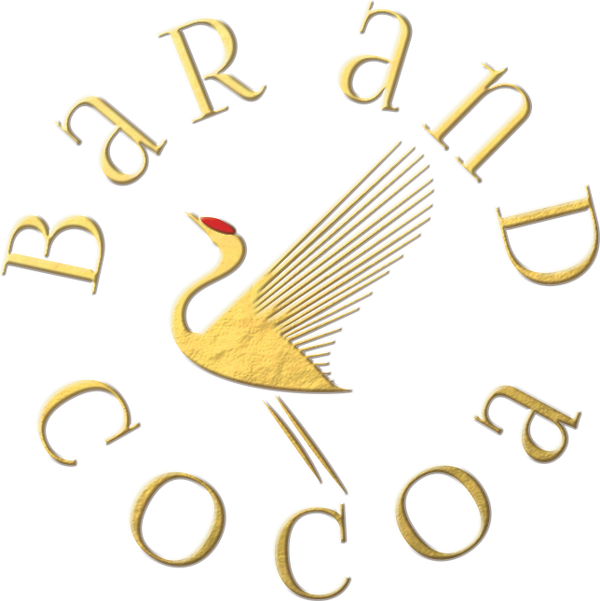

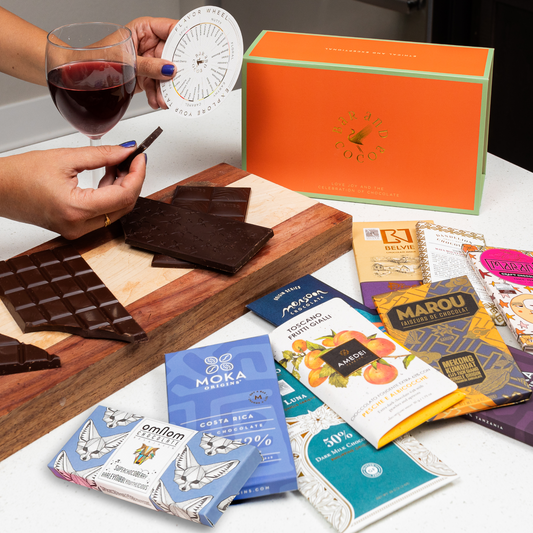
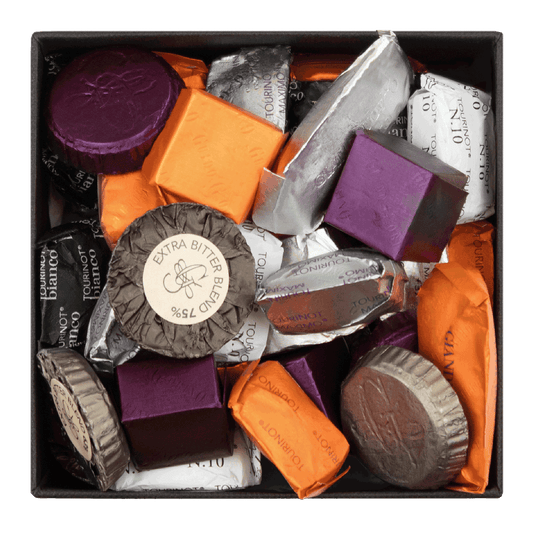
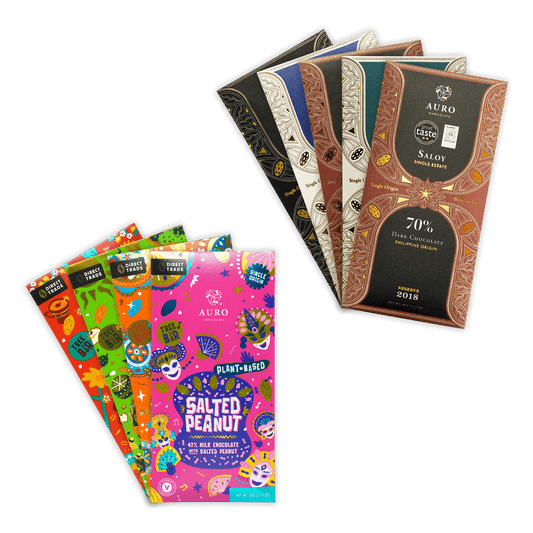
 How Chocolate is Born: Graphic by
How Chocolate is Born: Graphic by 
